In 1988 young contemporary choreographer Mark Morris, newly installed in Brussels’ munificent Théâtre de la Monnaie as resident dancemaker to succeed the Emperor of Big, Maurice Béjart, thought not just big but grandly off-beam. Instead of Béjart’s slickly sexy, stripped-down divinities of modern ballet, Morris gave the audience chubby, barefoot, all-sorts dancers naively skipping and slapping each others’ bottoms; instead of mass-market arena confections to starry rock, he chose to work with John Milton’s archaic poetry and George Frederick Handel’s filigree proprieties; instead of artful posturing, he offered richly fruited body language and artless, even naff childlike humour.
L’Allegro, il Penseroso ed il Moderato is uncategorisable - it’s both dance and oratorio, both narratively coloured and yet at times more formally complex than purest ballet, and its reappearance in Britain last night 13 years after its London premiere is a joy.
I imagine a dinner party with blind Milton, fat Handel and wicked Morris as a riotous and highly disputatious evening ending in sworn blood-brotherhood. Story is there none: more a stream of arias by solo singers and choruses incarnating an energetic battle for supremacy between two opposing figures, L’Allegro (who likes parties, happiness and Mirth) and Il Penseroso (who prefers pensive solitude and romantic introspection). Though Handel let Penseroso have the last word, Morris's edit of the score gives Allegro both first and last word, allowing Mirth to triumph.
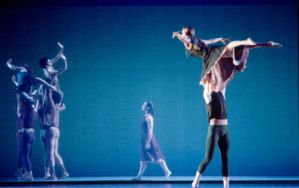 This happens on stage too. Milton’s phrase “Trip it as you go/ On the light fantastic toe” could have been minted for Mark Morris. It looks like dance from a dimension before ballet was invented, so carefree as to appear almost uncalculated. Dancers gust on as if blown on to the stage, or are glimpsed skipping in the wings as if we're missing the party they're at, or they trade slaps on bottoms and faces, or march in serious, dignified lines like schoolchildren going to heaven.
This happens on stage too. Milton’s phrase “Trip it as you go/ On the light fantastic toe” could have been minted for Mark Morris. It looks like dance from a dimension before ballet was invented, so carefree as to appear almost uncalculated. Dancers gust on as if blown on to the stage, or are glimpsed skipping in the wings as if we're missing the party they're at, or they trade slaps on bottoms and faces, or march in serious, dignified lines like schoolchildren going to heaven.
We saw Morris's darker side on his company’s British visit last autumn but it’s his smile that is the abiding image of L’Allegro, Il Penseroso ed Il Moderato. Handel is more sublime in his Penseroso aspect here. The Moderato figure was inserted by Handel’s librettist Charles Jennens to allow a referee to hold the ring between the two extremes, and though not Miltonic, the brief pastiche verses of “As steals the morn upon the night” inspired the composer to one of his most heartstopping numbers. This duet is a piece to hear before you die, and one to see too, calling up Morris’s most delicate, gossamer touch as quartets of dancers brush on to the stage and off again, evanescent as bubbles.
It’s because Morris drinks in Milton’s lists of images and turns them so beguilingly into dance imagery, the birds and the bees “with honey’d thigh”, “maids dancing in the chequer’d shade”, “throngs of knights and barons bold”, that it was such a pity last night to find the words so hard to hear from the singers down in the Coliseum pit, a vocally first-class team otherwise. Without the words clear, the top slice of Morris’s cleverness with bending verbal conceits as well as music to his choreographic artistry is lost.
Milton's mention of Ben Jonson's "sock" elicits a funny slapstick battle as men slap each other's faces and bottoms - but you need to hear the line too. The baritone’s couplet “To listen how the hounds and horn Cheery rouse the slumb’ring morn” raises the most diverting choreographed animation of a hunt - dancers clump together to become trees and bushes (typically Morris said, “With my budget I could have had real shrubbery but it’s more interesting to make my dancers be shrubbery”), two girls amorously holding hands scoot about the “shrubbery” while boys on all fours sniff their trail and even pee on the bushes. And when the baritone repeats and draws out his short phrases, Morris wittily repaints the scene tapering it off with a sweet little disappointed sigh between the girls as the chase is over.
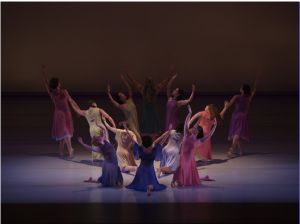 Again, without hearing the words “Thy rapt soul sitting in thine eyes”, you can’t feel the full poignancy of Morris’s device of a woman watching her mirror image dancing the other side of a gauze, as if wishing she could reach across time. Morris uses gauzes arrestingly like layers of perception or dimension, separating public and private spaces, past, present and future, and the gorgeous framing of Adrianne Lobel’s backcloths, pink, green, blackcurrant, lit in constantly shifting moods by James F. Ingalls, adds yet another layer of mastery to the whole experience. We start looking into black emptiness, we end, with joyful inevitability, in dazzling sunshine circling in ring-o'-roses.
Again, without hearing the words “Thy rapt soul sitting in thine eyes”, you can’t feel the full poignancy of Morris’s device of a woman watching her mirror image dancing the other side of a gauze, as if wishing she could reach across time. Morris uses gauzes arrestingly like layers of perception or dimension, separating public and private spaces, past, present and future, and the gorgeous framing of Adrianne Lobel’s backcloths, pink, green, blackcurrant, lit in constantly shifting moods by James F. Ingalls, adds yet another layer of mastery to the whole experience. We start looking into black emptiness, we end, with joyful inevitability, in dazzling sunshine circling in ring-o'-roses.
The motleyness of Morris's dancers is a moot point for first-time visitors, but last night they looked scrupulously tuned and fast-witted during this two-hour dance, and the fact that they range from super-graceful to dorky demonstrates the inclusiveness that characterises his entire creative viewpoint. You may disagree with his choices, but he chose them because he thinks they’re great.
I have more of a gripe about the musicians, despite the fact that Jane Glover was conducting a flexible and texturally interesting period performance by the ENO orchestra. You needed to know Milton’s verses to get the whole nine yards of Morris’s fertile inventiveness as Elizabeth Watts and Sarah-Jane Brandon make meltingly beautiful soprano sounds, but not a word could be made out from my stalls seat, and the men, Mark Padmore and Andrew Foster-Williams, fared little better. Clearer diction should be mandatory in this week’s remaining London shows and in Birmingham next week, or they’re spoiling the whole gig.
- Mark Morris Dance Group perform L'Allegro, il Penseroso ed il Moderato at the London Coliseum until Saturday; then perform at the Birmingham Hippodrome 22-24 April




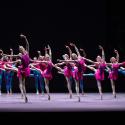

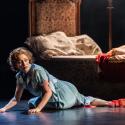


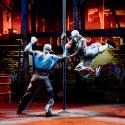



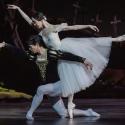
Add comment